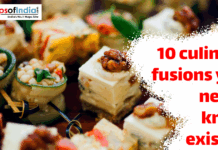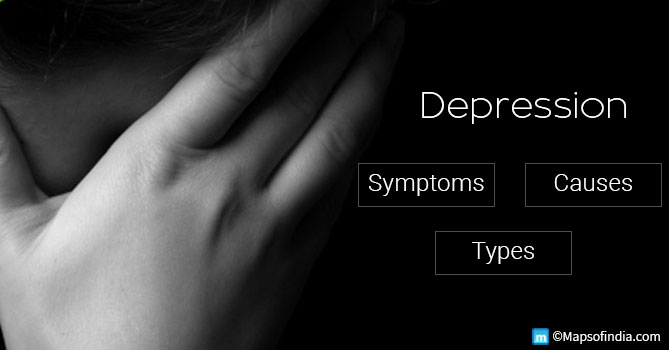Phobias are more than simple fears. Some phobias can spark intense and irrational reactions in our bodies. There are many commonly known phobias, which are of spiders or heights are common triggers. But there are many unusual phobias that grab attention. From fear of buttons to dread of long words, these are rare but real. In recent years, mental health awareness has highlighted its impact. Social media posts share stories of unique fears. These phobias shape lives, often misunderstood.
What Makes a Phobia Unusual
Phobias are anxiety disorders. Unusual phobias are more known for their rarity. The fear of clowns is called Coulrophobia. There is a phobia that involves disgust at irregular patterns, which is called Trypophobia. There is the fear of belly buttons, which is called Omphalophobia. According to a recent Psychology Today report, it is estimated that 1 in 10 people have some kind of phobia. Only 1%of them face rare ones. These fears can seem odd to outsiders. But they can cause a person to suffer. This can lead to reactions like panic or nausea. Triggers are specific, like balloons or mirrors. A Verywell Mind article notes their intensity. Understanding their uniqueness can help reduce the effect. Each phobia tells a personal story.
Trypophobia: Fear of Irregular Patterns
Trypophobia can feel unexpected to many people. This is a fear of clustered holes or patterns. The patterns are like honeycombs or lotus pods. Those who suffer from this feel disgust or dread. A Healthline report calls it a visceral reaction. It’s not officially a DSM-5 phobia. According to the studies, 16% of people feel it. A Scientific American article links this phobia to evolutionary instincts. Irregular patterns make them feel disease or danger. Social media can be helpful in spreading awareness. Avoiding triggers that can lead to this. Therapy can give some comfort. This phobia fascinates and unsettles.
Coulrophobia: The Fear of Clowns
Some people can fear the clown not only while watching the movie ‘IT’ but also if they have coulrophobia. For them, they’re terrifying. Coulrophobia is the fear of clowns. Seeing painted faces and exaggerated expressions triggers panic. A recent BBC Future article ties it to horror films. Movies like IT amplify this fear. According to the Cleveland Clinic report, childhood roots are noted. Unpredictable behaviour of the clown can also feel threatening. About 7% of adults have this fear. For them, Halloween events can be nightmares. You can find coping tips online. Avoid going to circuses or costume parties. Taking part in therapy like CBT can help to reduce fear. Coulrophobia shows how joy can turn to dread.
Nomophobia: Fear of No Mobile Phone
This modern time has given us some modern phobias. Nomophobia is one of them, it’s a phobia of no mobile phone. In this phobia, you fear losing phone access. No signal or dead batteries spark anxiety. According to the Forbes Health report 66% of people feel it. Smartphones have become lifelines in this era. Losing a smartphone connection can feel isolating. A Verywell Mind article links this to addiction. In this phobia, symptoms include sweating or trembling. The young adult age group is most affected. Coping with this phobia involves limiting screen time. Mind exercises calm nerves. Therapy can help in managing dependence. Nomophobia reflects our digital age. It’s a fear of disconnection.
Arachibutyrophobia: Fear of Peanut Butter
Arachibutyrophobia is a quirky phobia, but it’s a real thing. In this phobia, people fear peanut butter sticking to their mouth. Sufferers dread its texture or choking. According to the WebMD report, this is a rare condition. Less than 0.1% of people have it. Triggers include seeing or eating peanut butter. There are different symptoms, from nausea to panic. A Healthline article ties it to sensory issues. Childhood food aversions can also cause it. Avoiding peanut-based foods is a common step to tackle it. Exposure therapy can help. This phobia seems odd, but it disrupts lives. Understanding it fosters empathy.
Causes and Triggers of Unusual Phobias
Phobias can be caused by complex roots. Genetics play a role in it. According to the NIMH report 40% of phobias are genetically passed down. Traumatic events can trigger them. A bad clown memory in childhood can spark coulrophobia. Brain chemistry affects how our brain responds to fear. Amygdala overactivity can increase panic. Learned behaviours can also cause phobias. Seeing other people fear holes may cause you trypophobia. Cultural factors shape reactions. Media like movies or circuses amplify fears like clowns. Stress or anxiety disorders worsen phobias. Knowing causes helps in getting proper treatments. Each phobia has a unique origin.
Coping Strategies and Treatments
Tackling the problem of phobias is possible. Cognitive Behavioural Therapy (CBT) is one of the effective ways to do it. It helps to rewire thought patterns. According to the Mayo Clinic report, 80% of patients improve. Exposure therapy slowly desensitises fears. Start by slowly facing your fear. Medication like beta-blockers helps to calm the symptoms. Breathing exercises help to calm panic attacks. Support groups build a community of people who are suffering from the same problem, which can help to tackle it together. Avoiding triggers can only help in the short term. For the long-term effect, try getting therapy. Professional help can transform lives. Self-care boosts resilience. These tools empower phobia sufferers.
Social Impact and Awareness
Unusual phobias can cause misunderstanding in public spaces. People mock fears like the fear of peanut butter. This isolates sufferers from society. Awareness campaigns reduce stigma against them. World Mental Health Day 2024 focused on phobias. Social media plays a big role in spreading awareness among the masses. Celebrities openly discuss their own phobia. This helps in normalising phobias. Schools should educate on mental health from an early age. A Forbes Health article notes rising acceptance of unusual phobias. Supportive communities help. Friends and family can learn triggers and keep sufferers safe. Seeking help should become easier. Society is slowly embracing these struggles.
Conclusion
Unusual phobias are real and can cause the same amount of damage to mental health as normal phobias. Trypophobia is a phobia which causes disgust at patterns. Coulrophobia turns clowns into someone’s nightmares. Nomophobia is the gain from the digital age. Arachibutyrophobia makes peanut butter sufferable. These fears seem strange to outsiders, but they can disrupt lives. Genetics, trauma, and culture can lead to them. CBT and exposure therapy can give some sort of relief. Awareness is growing among the masses. Nowadays, mental health conversations are taking place in common places. Understanding phobias reduces stigma. Learn about them, and offer kindness.





